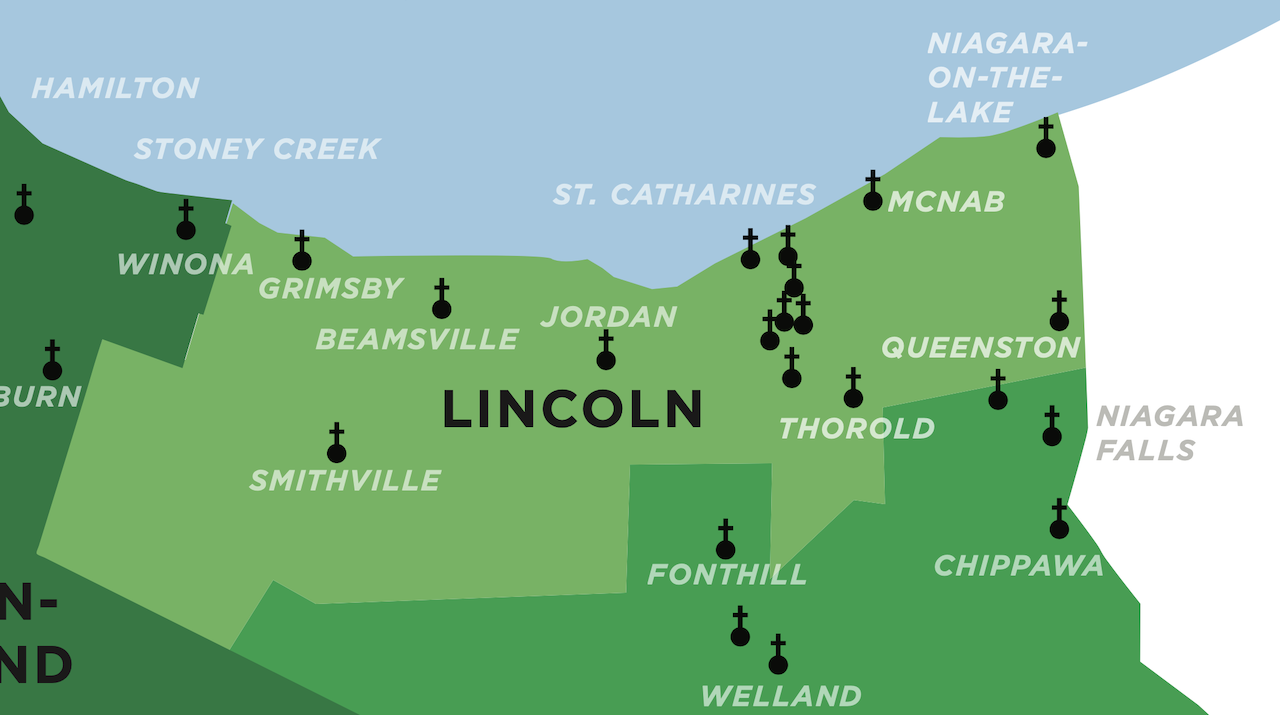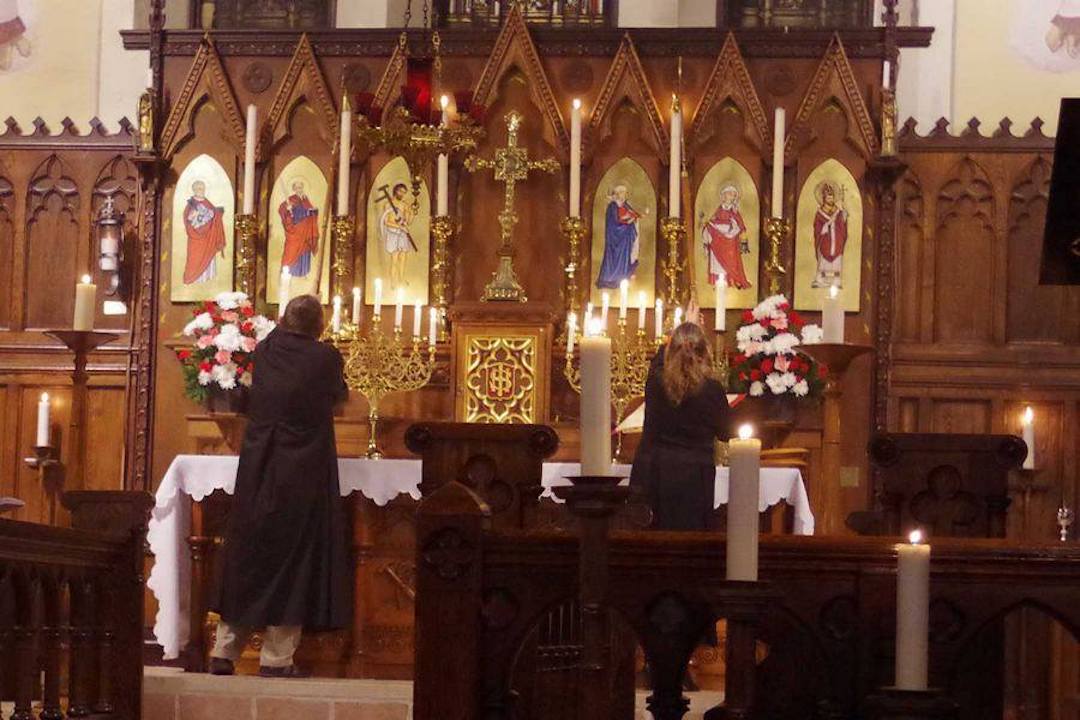In 1870 the Reverend Henry Holland of St. George’s Church in St. Catharines foresaw a need for church expansion to the less affluent area of the city’s east side and the Mission of St. Barnabas was born. For a few years he held services in rental space in a building known as Collier’s Hall. As the Mission grew it was apparent that a larger, more permanent, facility was needed.
In 1875 a wood frame church was erected on John Street on land, donated by Father Holland, and known as the St. Barnabas Chapel. In his sermon at the opening of the Chapel, Father Holland emphasized three principles which were to guide the new congregation: seating was to be free so that “none will be disbarred by inability to rent seating”, choral services, led by a surpliced choir, and based on The Book of Common Prayer would be the norm, and “a spirit of mission to the wider community would prevail.”
In 1879, Bishop Thomas Brock Fuller established St. Barnabas as a separate parish with Father Alexander W. Macnab as its first Rector. From its earliest days St. Barnabas was known as the High English Church.
In 1890, the wood frame church was moved to Queens-ton Street. Three years later the present stone church was completed and the original wood structure became the parish hall and served as such until it was demolished in 1935. The church was designed by the noted church architect Charles J. Gibson. Its English Gothic design is consistent with the general style of architecture which proponents of the Catholic revival in the Church of England considered the most appropriate style for churches. In 1953 a large building extension was made including a new parish hall, kitchen, parlour, washrooms, foyer and office.
Throughout its history, St. Barnabas has endeavoured to remain true to the guiding principles established by Father Holland. Mission and Outreach: In a spirit of ecumenism we have provided worship space for other congregations including the Armenian congregation of St. Gregory the Illuminator, Church of the Resurrection and the local Coptic congregation as well as local groups such as Oddfellows, Rebekkas and Square Dancers. Currently, meeting space is offered for groups for mental health, Friends of Schizophrenics, addictions, and others.
As well, we are involved with Start Up Niagara and its work with the homeless in our community. More recently we have embarked on a program to provide meals to those living in our neighbourhood in food insecurity as well as producing quilts for cancer victims in conjunction with Victoria Quilts of Canada. Our hope is that we can do even more outreach within the local neighbourhood.
St. Barnabas has endeavoured through the years to fund its various outreach and community projects. Currently fund raising is headed by a devoted group of parishioners known as the Special Events Committee. This group raises funds through catering activities, rental of kitchen facilities and production and selling of meat and chicken pies.
In keeping with Father Holland’s wishes we continue to celebrate the traditional Anglo-Catholic services including the externals of worship such as vestments, candles, bells, incense and holy water. Our liturgy derives from The Book of Common Prayer, particularly the first Prayer Book of 1549, which was the most Catholic of all the service books, and The English Misssal, a translation of the ancient Roman Rite.
Welcome To Lincoln Region

Lincoln Region is surrounded by a blessed mixture of history and agriculture.
It is steeped in history (the War of 1812, Canadian heroine Laura Secord, General Isaac Brock), culture (home of the Shaw Festival), the OHL Niagara Ice Dogs, and the Lake Ontario entrance to the Welland Canal.
This is also the province’s “wine region” with close to 100 wineries, and even more fruit producing farms, and is home to the popular The Forty Creek Distillery (Grimsby), and the Bench Brewing Company (Beamsville). It is also home to a countless number of greenhouses, which ship flowers around the world.
In the midst of all this culture and growth and activity, The Anglican Church seeks to let the light of Jesus shine. From traditional services to contemporary liturgies … historic churches (St. Mark’s Niagara on the Lake, St. Saviour’s Queenston) to less traditional gatherings (Ridley College chaplaincy and the Mission to Migrant Farmworkers), we offer it all …. And continue to seek new ways to meet the needs of our community, and proclaim the gospel.


Deacons Bench: Your Servant is Listening